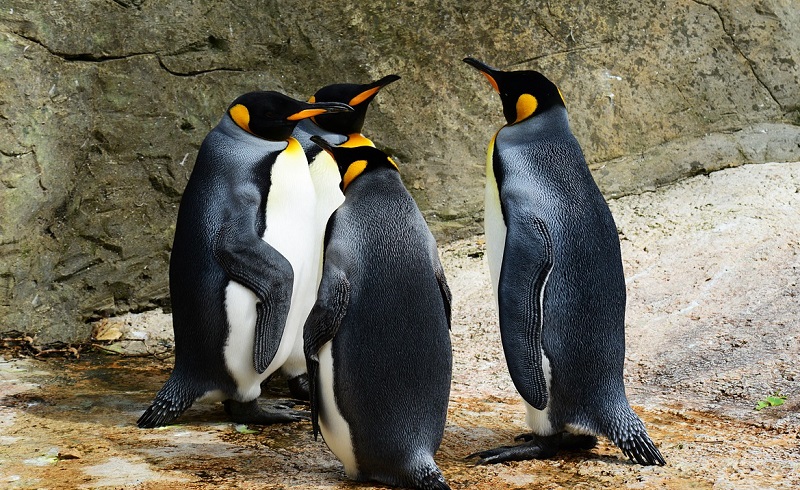
27 Aug Getting-to-Know-You Activities for Your Club or Meetup
It’s back-to-school time and that means lots of new opportunities for groups, clubs, and after school activities. All kinds of people, children and adults alike, will be meeting new people. If you organize a group of any kind, you can feel the burden of helping your members through this period. For some, meeting a group of people for the first time is exhilarating; for others, intimidating. How can you put everyone at ease and start building a sense of community right away? Try some of these getting-to-know-you activities, listed from simplest, requiring no preparation, to more complex.
Show and Tell
Virtually everyone carries a phone or other device with photos on it. Ask everyone to show another person (or two or three other people) a favorite photo. People are usually eager to talk about their children, pets, or a recent vacation. They can complete the activity quickly, if time is short, or the photos may spark longer conversations and even new friendships.
Nametag Activities
If you hand out nametags at your event, make them a tool for getting people acquainted. You might, for example, ask everyone to write an additional piece of information beneath their name. It might be their Twitter or Instagram name, if you have the right crowd for that. You could have them write their profession, hometown, or how long they’ve been involved with your organization. If it’s a business mixer, ask them to write what they’re looking for — for example, a graphic designer or investors. These pieces of information provide conversation starters that people can use at will. Rather than announcing that it’s time for the activity, simply let people mingle and engage as they want to.
Two Truths and a Lie
This game is an old favorite most people probably know. Break attendees into small groups of perhaps 3-6 people. Each one will tell the others two facts about themselves, plus one made up story, without revealing which is the lie. The others in the group then guess. Here’s a fun variation on this game, if some people have met before: Ask each person to tell a “fun fact” about another person in the group. The observers then guess whether this “fact” is true or false.
Paper Airplane
Hand out identical sheets of paper. Ask each person to write a fact about themselves. It could be a pre-determined fact such as the last place they went on vacation. Or it could be something silly of their choosing. Show everyone how to fold the paper into an airplane. Then ask everyone to fly theirs toward the center of the room at the same time. Each person then retrieves an airplane at random, reads the fact, and guess who wrote it.
BINGO
Create a BINGO card with human traits. Here is one example you can download, but it may be more fun to tailor yours to your audience. Decide whether the players need to fill the whole card or just a row to win, depending on time available. Allow them to circulate and ask each other who fits the traits. Establish rules like “one person, one trait.” In other words, can you meet one person who fulfills two or three BINGO squares, or do you have to find a separate person for each? Offer a prize to the person who achieves BINGO first.
Human Initials
This activity is more physical, so consider whether it’s right for your group. People with physical limitations or dressed in business attire may not enjoy it. It’s more suited for a group of teens or a group meeting for a physical activity like a dance class. Divide people into two groups, A and B. Ask each person in Group A to try and form the initial of either their first or last name with their bodies. Then, ask people in Group B to guess what the initial stands for. Give them two or three guesses before they find out the answer. The whole time they’re guessing, the person has to hold the pose. When everyone in Group A has had a turn, swap and do it with Group B. Doing something physical helps to loosen people up and can be humorous as well. (If using the whole body is simply impractical, a person can use their hands.) In addition, the visual of a first initial helps people to remember each other’s names!
Scavenger Hunt
This activity requires planning and ample time to complete, but you can still tailor it to the appropriate scale. Explore the surroundings for the event ahead of time. List items for hunters to find. Include just three or four for a short hunt or as many as 20 if you have more time. Vary them from easy to difficult-to-find. Divide participants into pairs or team and set a time limit. As will all of the activities, make the rules clear from the start. Offer a prize if you can.
Things to Keep in Mind
Know your audience. If you’re working with a group of theatre majors, they’re probably comfortable putting themselves out there. If you’re working with a group of computer programmers, you can’t make the same assumption. Never force anyone to participate. Also, for group activities, don’t insist that people join up with strangers. Encourage it, if it’s important, but remember some people are less comfortable meeting new people than others.
These activities can provide a starting point. The only limit to getting-to-know-you activities is your imagination. Now get out there and break the ice!
PHOTO: Polly Dot / CC0 Public Domain




No Comments